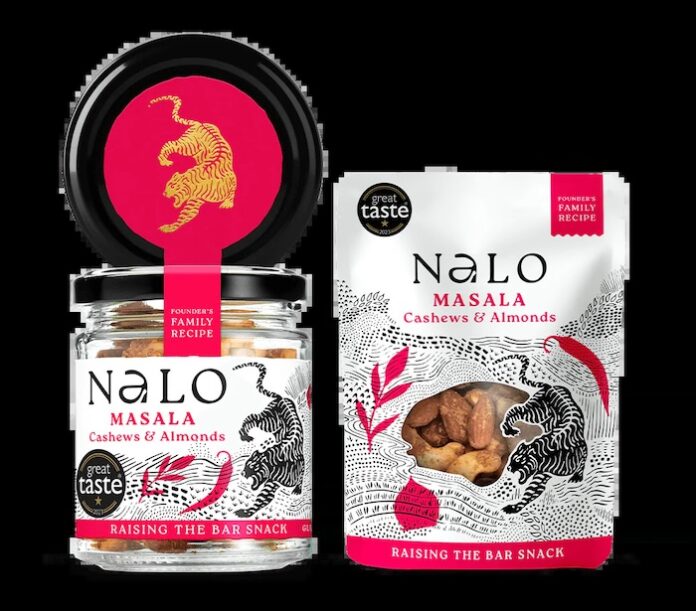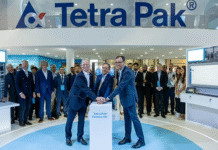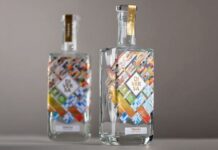From first touch to final bite, innovative packaging is transforming snacks into experiences that engage the senses, conscience, and heart – a theme explored at London Packaging Week 2025.
Walk down any supermarket aisle, and it’s easy to feel overwhelmed: a kaleidoscope of snack packets vying for attention, each shouting louder than the last. Yet, in this sea of bright graphics and bold claims, some brands are quietly rewriting the rules.
Consumers today expect more than taste and convenience. This shift has transformed packaging into a stage for storytelling, a tactile ambassador for sustainability, and a means to forge an emotional connection long before the first morsel reaches the tongue.
It’s this very intersection of creativity, materials, and consumer insight that Food & Consumer Pack at London Packaging Week, taking place 15 & 16 October, is designed to celebrate. The two-day event drives packaging innovation across the market for everyday food, drinks, and FMCG products, providing a toolkit for technologists and designers.
Few understand this better than Sean Mason, co-founder of Two Farmers Crisps; Jane Struk, creative director at ARD Design Agency; Sasha Ferguson, creative design manager at Castle Colour; and Divya Malhotra-Mulloy, founder of Nalo London.
Mason ensures that sustainable, compostable packaging feels as premium as conventional alternatives. Struk guides brands through reinvention. Ferguson brings expertise in sensory materials and textures. Malhotra-Mulloy shows how design can blend indulgence, sustainability, and storytelling. Their perspectives together illustrate a market in flux, where design, materials, and emotion intersect.
Storytelling from the first touch
Before a single crisp reaches the mouth, a snack has already begun telling its story. For Two Farmers, that story starts the moment a consumer touches the packet. Sean explains that packaging isn’t merely protective; it is the first chapter of the brand’s narrative.
“Packaging is often the first touchpoint between a brand and a consumer, especially for something as instinctive as a snack. It’s not just there to protect the product; it tells a story before a single crisp is tasted. For us, the goal was to make the packet a continuation of the farm – something that feels honest, tactile, and purposeful. Our design nods to the land we farm, the flavors we grow, and the character behind the brand. When a consumer picks up a Two Farmers packet, we want them to feel they’re buying into something real – crisps with a conscience, rooted in place and people.”
This philosophy resonates across the design world. Jane Struk notes that even small design choices can turn a mundane snack into a moment of engagement. “It sets the tone for the whole experience. Good design can tell a story, show the brand’s personality, and spark emotions. It can even turn opening and enjoying a snack into a little ritual, making the moment feel special.”
Sasha, creative design manager at Castle Colour, adds, “Packaging is so much more than product protection – it’s often the first moment a consumer interacts with your brand. When you’re in a supermarket, a shop, or even scrolling online, you only get a second or two of someone’s attention before they move on. That’s why making a strong first impression is crucial. For snacks in particular, you want packaging to be a transformative sensory experience – something that lures people in through look, feel, and design details that keep them coming back.”
Divya, Founder of Nalo London, adds a complementary brand perspective, “Packaging is often the first physical interaction a customer has with a brand – it’s your handshake, your hello, your story all in one. At NALO, we treat packaging as an invitation to experience our world – bold, flavorful, and unexpected. Design is a powerful tool to evoke emotion; from the typography to the color palette to the tone of voice, everything should work together to communicate what you stand for and how you want people to feel when they open that pack. Our goal is for consumers to feel a moment of elevation, like they’ve just discovered something truly special.”
Taken together, these insights demonstrate that effective packaging does more than present a product; it orchestrates an experience. The texture of the packet, the visual cues, and the narrative embedded in its design all work in concert to convey authenticity, values, and a sense of place. In other words, the first bite is informed by the story that came before it.
Sensory design as a differentiator
If storytelling sets the stage, materials deliver the performance – and the sensory impact can be just as powerful as the visuals.
Beyond visual storytelling, the materials themselves play a critical role in shaping perception. For Two Farmers, this meant investing heavily in the tactile experience. “Our compostable packaging is probably the biggest difference from the norm – and that’s intentional,” Sean explains.
“Our current film, now in its third generation, is firm and glossy. You notice the difference before you even open the bag. It’s a sensory experience that subtly reinforces the message – these are crisps that have been thought through, from field to packet. The material is made from sustainable cellulose with vegetable inks and plant-based glues. It crinkles differently, breaks down naturally, and creates a moment of pause – a reminder that you’re snacking sustainably.”
Jane from ARD Everyday Creative complements this perspective with an emphasis on usability and practicality. “The most effective solutions are the ones that combine sensory appeal and visual impact with real usability. For instance, for multi-portion snacks, resealable formats are essential, but the standard zipper closures on pouches often make the packaging difficult, if not impossible, to recycle. That’s where alternatives like bio-films, cellulose coatings, or paper with water-based barriers work really well. They protect freshness while also giving a softer, natural feel that consumers notice.”
Sasha highlights materiality, “For more natural or rustic products, using the reverse of the board or uncoated stocks signals authenticity and recyclability. For premium categories, rigid high-quality boards communicate luxury and gift-worthiness. Post-print finishing, like embossing or textured grain effects, adds another sensory layer, giving the pack texture that consumers can feel in their hands.”
Divya adds, “We’ve been playing with soft matte-touch finishes combined with selective glossing, allowing certain brand assets to catch the light or offer subtle tactility. That contrast creates a more sensory, premium feel and draws attention to finer details, like our flavour symbols or logo. We’ve also introduced uniquely shaped windows that flow with the design – giving a peek at the product in a way that feels both playful and elegant. You see the flavour, the texture, and you want to eat it – it’s an invitation, not just a window.”
By combining touch, sound, and visual cues, these brands demonstrate that even small sensory details can heighten engagement, reinforce brand purpose, and differentiate products in a crowded aisle.
Sustainability meets indulgence
The challenge of delivering a premium feel without compromising sustainability is one Sean from Two Farmers faced from the beginning. “We knew we couldn’t compromise – it had to look and feel special and be truly sustainable. We collaborated with our packaging partner for over three years to develop a fully compostable solution that didn’t compromise on aesthetics. The result is packaging that is carefully considered, beautifully printed, and rooted in authenticity. It doesn’t shout, but it invites. For us, indulgence is quiet confidence, backed by real care.”
Struk sees indulgence as a matter of thoughtful design rather than excess. “Premium doesn’t always mean glossy or excessive – it can also come through in simplicity, in how the pack opens, how it feels in hand, or in details like finishes and embossing. When sustainability choices are communicated clearly and integrated seamlessly into the design, consumers see it as part of the brand’s values, not a compromise.”
Sasha Ferguson adds, “We make sure sustainability solutions aren’t just visual, but actually stand up to scrutiny. Sometimes virgin board can be more sustainable than recycled, depending on the project. Our EcoVadis Gold accreditation helps guide customers toward solutions that are genuinely responsible while still delivering a premium feel.”
Divya, “As a small brand, every choice has to work twice as hard, both for the planet and positioning. We use mono-materials, paper labels, and glass jars, but we never want packaging to feel ‘worthy’ at the expense of luxury. Sustainability doesn’t have to look dull – thoughtful design can communicate indulgence in a pared-back way. In 2026, we’ll switch jars for a more sustainable option that still feels premium, maybe even more so!”
This shared philosophy illustrates a turning point in packaging design: the premium snack is no longer about extravagance but about authenticity, tactility, and environmental responsibility.
Collaboration as a catalyst
Innovative packaging rarely emerges from a single mind or company. For Two Farmers, Mason stresses that lasting partnerships were key to their journey. “Developing our compostable film took years of back-and-forth, trial batches, and shared problem-solving with Parkside Flexibles. Each iteration improved durability, print quality, and performance, but more importantly, it taught us how to innovate together.”
Struk underscores how collaboration can also guide brands into new categories. “When we designed the So Nuts range for Ragusa, we had to balance practical functionality with category design codes. By working closely with the brand, we created packaging that felt familiar yet elevated, allowing consumers to engage with the product in an entirely new way.”
Divya adds a start-up perspective, “For NALO, collaboration isn’t optional – it’s essential. Our first pouches were a nightmare to open until we partnered with a supplier to develop a custom laser score. That simple change transformed the consumer experience. Now, with our 2026 refresh, we’re working even more closely with partners to ensure every tactile moment, from tearing to seeing the product, is thoughtful and seamless.”
Sasha emphasizes that collaboration goes beyond production: “Working with material specialists and printers allows us to explore textures, coatings, and finishes that would be impossible alone. The best packaging solutions emerge from teams that share vision, expertise, and a willingness to iterate.”
The future: connected, traceable, and transparent
Looking to the future, all four experts see packaging evolving into an experience in its own right, combining functionality, narrative, and interactivity. Mason predicts, “The future lies in packaging that is traceable, tactile, and transparent. Consumers will expect to know not just what’s inside, but where it came from and what happens to it next.”
Jane highlights the role of technology, “Smarter materials and connected solutions will allow brands to integrate information, interactivity, and personalisation into everyday packs, blending functionality with an emotional connection.”
Sasha notes the potential of new substrates and formats, “From cellulose films to compressed paper trays, sustainable innovation is moving fast. The challenge is to implement change thoughtfully, balancing function, beauty, and engagement while keeping the consumer’s expectations at the heart.”
Divya adds a brand-driven perspective. “We’ll see packaging as a storytelling tool – QR codes for pairings, AR experiences, and other interactive elements. The goal is to make every moment of engaging with the pack feel intentional, elegant, and immersive, not just functional.”
Ultimately, whether it is crisps born from Herefordshire fields, Swiss chocolate entering the snacking aisle, or a start-up redefining indulgence and sustainability, the story is clear: packaging is no longer an afterthought. It has become a stage for innovation, storytelling, and emotional connection, where sustainability, design, technology, and consumer desire intersect to transform every snack moment into a meaningful and memorable experience.
For those eager to explore these evolving trends, the Food & Consumer Pack talks program at the upcoming London Packaging Week 2025 offers a front-row seat to the latest insights, innovations, and collaborations shaping the future of everyday food, drinks, and FMCG packaging, ensuring that every team leaves inspired to create packaging that delights, informs, and engages like never before.
IndiFoodBev — authentic, impactful and influential
An English-language food and beverage processing and packaging industry B2B platform in print and web, IndiFoodBev is in its third year of publication. It is said that the Indian food and beverage industries represent approximately US$ 900 billion in revenues which implies more than 20% of the country’s GDP. Eliminating the wastage on the farmside can help to deliver more protein to a higher number of the population apart from generating sizable exports. The savings in soil, seeds, water, fertilizer, energy and ultimately food and nutrition could be the most immense contribution that country is poised to make to the moderation of climate change.
To improve your marketing and grow sales to the food and beverage processing and packaging industry, talk to us. Our research and consulting company IppStar [www.ippstar.org] can assess your potential and addressable markets in light of the competition. We can discuss marketing, communication, and sales strategies for market entry and growth.
Suppliers and service providers with a strategy and budget for targeted marketing can discuss using our hybrid print, web, video, and social media channels to create brand recognition linked to market relevance. Our technical writers are ready to meet you and your customers for content.
The second largest producer of fruit and vegetables in the world is continuously expanding processing capacities and delivery systems with appropriate innovative technologies. We cover product and consumer trends, nutrition, processing, research, equipment and packaging from farm to thali. Get our 2025 media kit and recalibrate your role in this dynamic market. Enhance your visibility and relevance to existing markets and turn potential customers into conversations. Ask for a sample copy of our bi-monthly in print or our weekly IndiFoodBev eZine each Wednesday.
For editorial info@ippgroup.in — for advertisement ads1@ippgroup.in and for subscriptions subscription@ippgroup.in
Naresh Khanna – 10 February 2025
Subscribe Now












